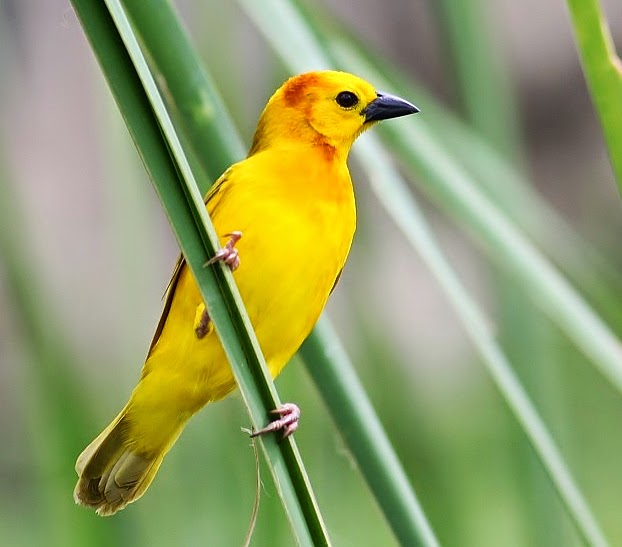 |
| Photo by Artur Bujanowicz (Bird Watching) |
Common name:
Taveta golden weaver (en); tecelão-dourado-de-cabeça-castanha (pt); tisserin de Taveta (fr); tejedor Taveta (es); genickbandweber (de)
Taxonomy:
Order Passeriformes
Family Ploceidae
Range:
This species is found in south-eastern Kenya and north-eastern Tanzania.
Size:
These birds are 14 cm long and weigh 18-24 g.
Habitat:
The Taveta golden weaver breeds in marshes and swamps, using nearby dry savannas, dry scrublands and dry tropical forests during the rest of the year.
Diet:
They feed mainly on grass seeds, also taking agricultural crops such as maize, and some insects such as ants.
Breeding:
These birds breed in September-May. They are believed to be polygynous and nest in large colonies. Each nest is an oval structure woven by the male with grasses and attached to two or more grass stems or reeds. The female lays 2-3 glossy, dark live-green eggs, which are incubated for 13 days. The chicks fledge about 14 days after hatching.
Conservation:
IUCN status – LC (Least Concern)
This species has a relatively large breeding range and is reported to be common. The population is suspected to be stable in the absence of evidence for any declines or substantial threats.







